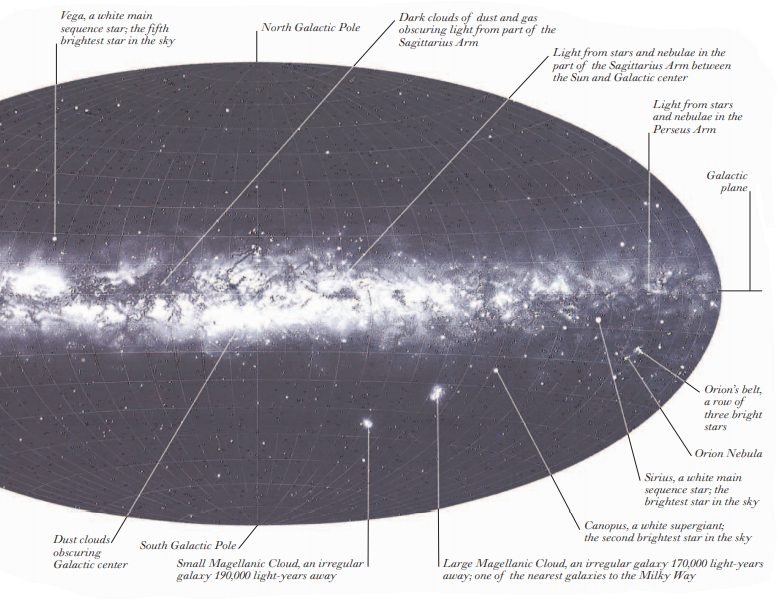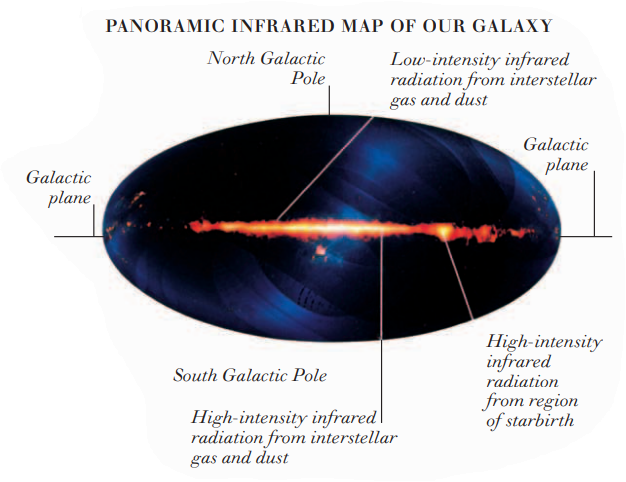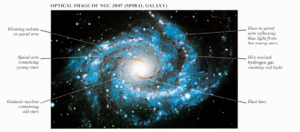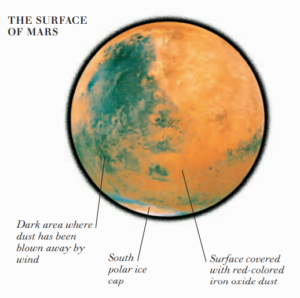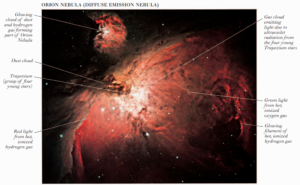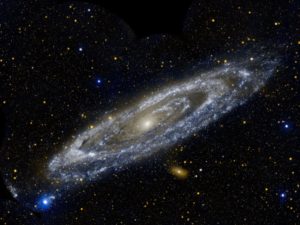THE MILKY WAY
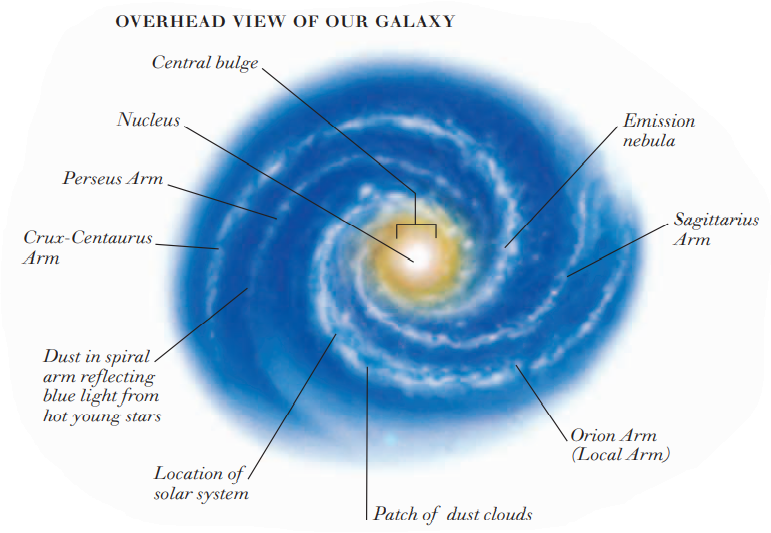
THE MILKY WAY IS THE NAME GIVEN TO THE FAINT BAND OF LIGHT that stretches across the night sky. This light comes from stars and nebulae in our galaxy, known as the Milky Way Galaxy or simply as “the Galaxy.” The Galaxy is believed to be a barred spiral, with a dense central bar of stars encircled by four arms spiraling outward and surrounded by a less dense halo.
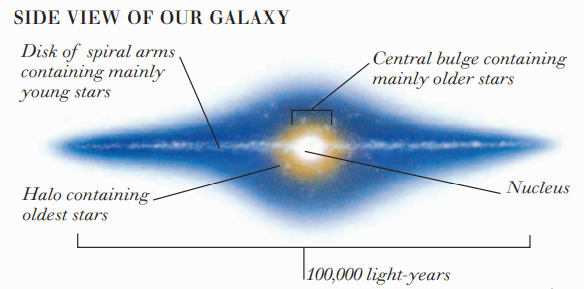
We cannot see the spiral shape because the solar system is in one of the spiral arms, the Orion Arm (also called the Local Arm). From our position, the center of the Galaxy is completely obscured by dust clouds; as a result, optical maps give only a limited view of the Galaxy. However, a more complete picture can be obtained by studying radio, infrared, and other radiation. The central part of the Galaxy is relatively small and dense and contains mainly older red and yellow stars. The halo is a less dense region in which the oldest stars are situated; some of these stars are as old as the Galaxy itself (possibly 13 billion years). The spiral arms contain main sequence stars and hot, young, blue stars, as well as nebulae (clouds of dust and gas inside which stars are born). The Galaxy is vast, about 100,000 light-years across (a light-year is about 5,870 billion miles/9,460 billion km); in comparison, the solar system seems small, at about 12 light-hours across (about 8 billion miles/13 billion km). The entire Galaxy is rotating in space, although the inner stars travel faster than those farther out. The Sun, which is about two-thirds out from the center, completes one lap of the Galaxy.

